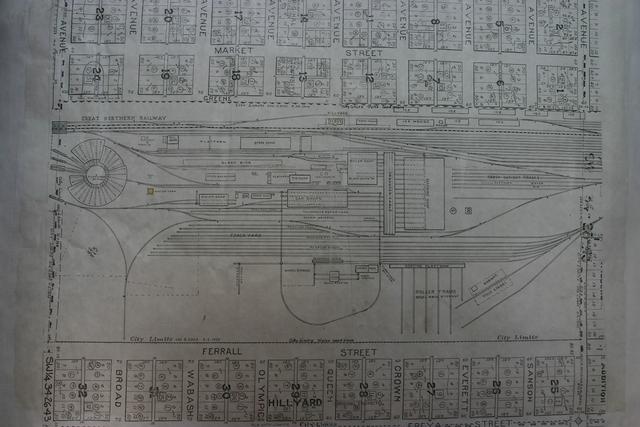
The Spokane Hillyard was a huge facility owned and run by the Great Northern Railroad. It had many shops to facilitate maintenece of the locomotives, rolling stock, and other infrastructure of the railroad. It also had a couple large switching yards, and a couple industries to serve depending on the era.

Paragraph 2. This one I made longer to showcase how it drops down a line, it's quite interesting. Also appreciate this link as an example of link html. Remember to put a ../ in the address for each step back in the directories you need to go from the current page before you can go down a branch to the page you want.
For this layout, I wanted to make a switching layout about a foot and a half deep, and however long it needs to be. I'm lucky enough to have a (albeit grainy) map of the hillyard. I'll be looking for a more detailed map this summer. I plan to take a trip to Spokane, it's about a 5 hour drive from my home in Seattle, and see if their local archives have any cool history. That'll make it's way here.

Second paragraph, notice the double line break after.
One of my hopes for this layout is to get to run locomotive repair, overhaul, and even assembly operations (ops). That includes reciving boxcars with parts from other manufacturers (usually things like lamps, gauges, etc.), reciving raw materials (lumbar, steel ingots, sheet metal, maybe rivets), the nebulus ~building things~, and final assembly. This also would include the transfer of parts between and within the buildings in the Hillyard. If this sounds like a lofty goal, it is! And it was quite the adventure to get there.
This journey started with the book Superpower by TODO TODO [d], which proved to be a great starting point for how a locomotive works, well, works. Written from the perspective of a young man just starting his employ at the LIMA locomotive works, we follow him helping out at each stage of the creation of a new locomotive. This gives a great narative idea of not only the process of building a steam locomotive, but also how the people in this shop lived, interacted with each other, and how they went about their work. This is invaluable information when the buildings and tracks are placed, and it's time to fill the layout with people going about their lives.
The book breaks the production process into a few steps:
The next step was following the sources in [d] to try and get some more academic data about locomotive production. It mentioned one of the best sources was the California State Railroad Museum in Sacramento, which I have been to many times over. I emailed them and...

Second paragraph, notice the double line break after.
it's a switch layout, so.

Second paragraph, notice the double line break after.
A link example, can be put inside paragraphs of text.
A link example, but it's centered!

